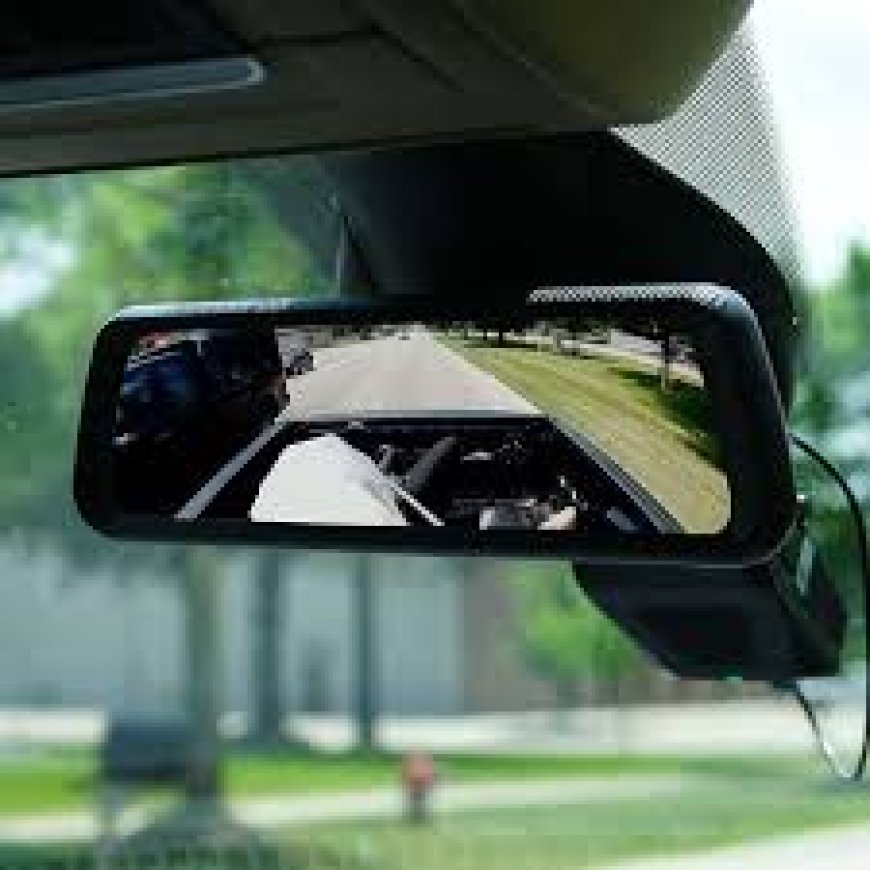Why HD Car Mirror Cams Are Revolutionizing Vehicle Safety
This article explores why HD car mirror cams are revolutionizing vehicle safety, their benefits, how they work, and considerations for choosing the right one for your vehicle.

In recent years, the automotive industry has seen significant advancements in safety and surveillance technology, particularly with the introduction of HD car mirror cams. These devices, often integrated into rearview mirrors or dashboards, serve a dual purpose of enhancing driving safety and providing valuable footage in case of accidents or incidents. This article explores why HD car mirror cams are revolutionizing vehicle safety, their benefits, how they work, and considerations for choosing the right one for your vehicle.
Understanding HD Car Mirror Cams
HD car mirror cams, also known as dash cams or rearview mirror cams, are compact cameras designed to record video footage both inside and outside of the vehicle. They are typically mounted on the rearview mirror or dashboard, offering a wide-angle view of the road ahead and sometimes the interior cabin. These cameras capture high-definition video in real-time, which can be crucial for documenting accidents, monitoring driving behavior, or providing evidence in insurance claims.
Key Features of HD Car Mirror Cams
- Dual-Channel Recording: Many HD mirror cams record both the front view and interior view of the vehicle simultaneously.
- Wide-Angle Lens: Provides a broad field of view to capture details on both sides of the vehicle.
- Loop Recording: Automatically overwrites the oldest footage with new recordings to ensure continuous operation.
- G-Sensor: Detects sudden movements or impacts, automatically saving footage in case of accidents.
- Parking Mode: Monitors the vehicle even when parked, recording video if motion or impact is detected.
Why HD Car Mirror Cams Are Essential for Vehicle Safety
1. Accident Documentation and Insurance Claims
One of the primary reasons HD car mirror cams are essential is their ability to provide unbiased documentation of accidents. In the event of a collision, the footage recorded by the camera serves as valuable evidence for insurance claims and legal proceedings. This footage can clarify fault, provide details of the accident dynamics, and protect drivers from fraudulent claims.
2. Enhancing Driver Awareness and Behavior
HD car mirror cams promote safer driving habits by encouraging drivers to remain attentive and obey traffic laws. The presence of a dash cam serves as a constant reminder that driving behavior is being monitored, which can deter reckless driving, speeding, and other unsafe practices. Some models even feature built-in GPS to track speed and location data, providing comprehensive feedback on driving habits.
3. Protection Against Vandalism and Theft
In addition to monitoring while driving, HD car mirror cams offer security benefits when the vehicle is parked. Parking mode features enable the camera to activate and record video if motion or impact is detected, helping to identify vandals, thieves, or hit-and-run incidents in parking lots or on the street.
4. Improving Fleet Management and Vehicle Maintenance
For businesses with fleets of vehicles, HD car mirror cams are invaluable tools for fleet management. They provide oversight of driver behavior, vehicle location tracking, and maintenance needs. This data can be used to optimize routes, improve fuel efficiency, and ensure vehicles are properly maintained, ultimately reducing operational costs and enhancing overall efficiency.
How HD Car Mirror Cams Work
HD car mirror cams operate similarly to traditional dash cams but are integrated into the rearview mirror for convenience and discreet installation. Here's a basic overview of how they function:
-
Installation: HD car mirror cams are typically mounted over the existing rearview mirror or on the dashboard using a suction cup or adhesive mount.
-
Power Source: They are powered either through the vehicle's cigarette lighter socket or wired directly to the vehicle's electrical system.
-
Recording: Once powered on, the camera begins recording video automatically. Many models offer continuous loop recording, where old footage is overwritten by new footage to ensure uninterrupted recording.
-
Storage: Recorded footage is stored on a removable microSD card, with some models supporting high-capacity cards for extended recording.
-
Playback and Access: Footage can be accessed directly from the camera or transferred to a computer or smartphone for viewing and sharing.
Considerations When Choosing an HD Car Mirror Cam
When selecting an HD car mirror cam, consider the following factors to ensure it meets your needs:
- Video Quality: Look for cameras that offer at least 1080p HD resolution for clear video footage.
- Field of View: A wide-angle lens (around 140 degrees or more) provides better coverage of the road and surroundings.
- Night Vision: Enhanced low-light performance ensures visibility in nighttime driving conditions.
- Additional Features: Check for features like GPS logging, Wi-Fi connectivity for easy file transfer, and a built-in screen for playback.
- Installation: Choose between models that attach to the existing rearview mirror or replace it entirely.
- Budget: Prices vary depending on features and brand, so consider your budget and prioritize essential features for your usage.
Conclusion
HD car mirror cams represent a significant advancement in vehicle safety and surveillance technology. By providing real-time video recording of both the road ahead and the interior of the vehicle, these devices enhance driver awareness, document accidents, and protect against vandalism and theft. Whether for personal vehicles, commercial fleets, or rideshare drivers, HD car mirror cams offer peace of mind and valuable evidence in critical situations. Investing in a quality HD car mirror cam is not just about safety but also about safeguarding your vehicle and ensuring responsible driving practices on the road.

 hollandsmith157@gmail.com
hollandsmith157@gmail.com 










